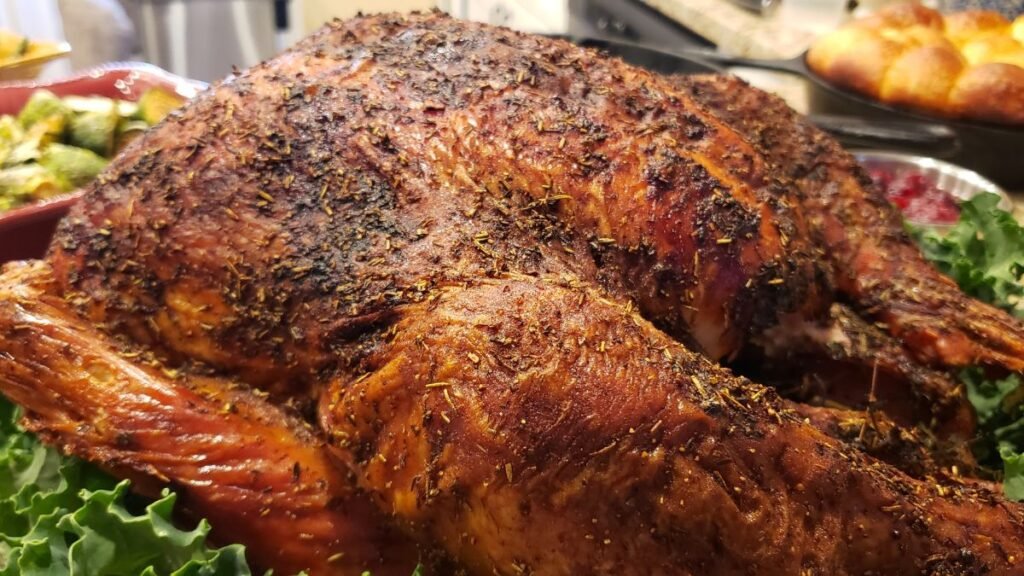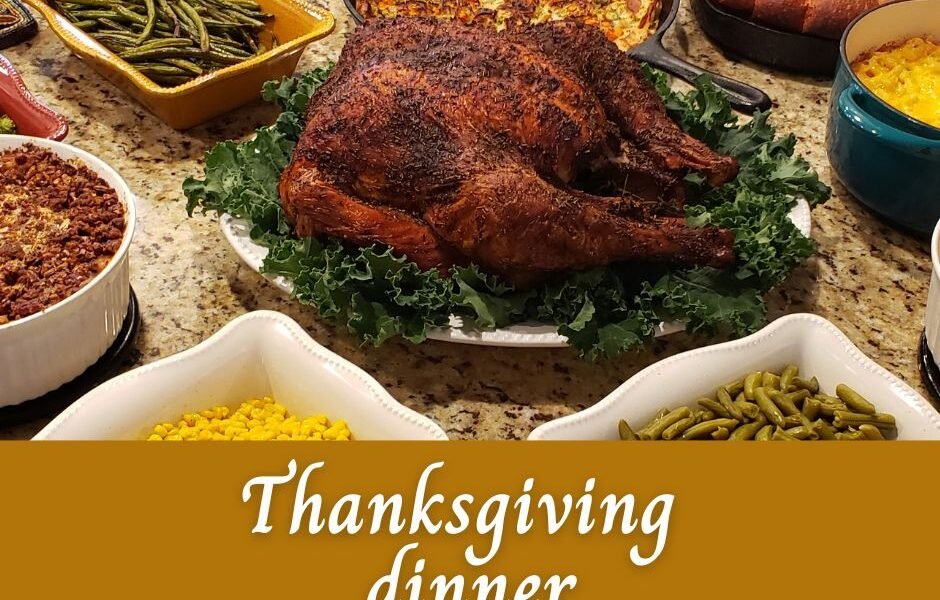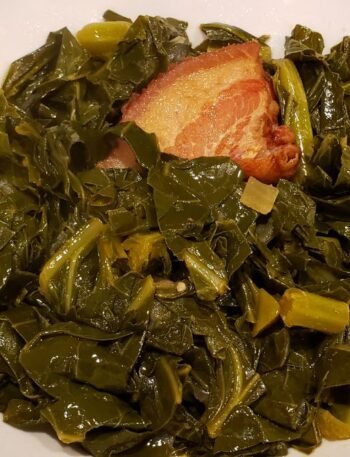Introduction to Thanksgiving Dinner Planning
Thanksgiving is one of the most cherished holidays in the United States, celebrated with a focus on gratitude, togetherness, and of course, a memorable meal. While the cultural significance of Thanksgiving centers around expressing gratitude, the dinner itself has evolved into a central aspect of the celebration. Families gather around a feast that typically showcases traditional dishes alongside new favorites, making it the highlight of the holiday.
Planning a successful Thanksgiving dinner is no small task, but with the right preparation, it can be an enjoyable and rewarding experience. The key lies in balancing the joy of cooking with the logistics of pulling together a meal that satisfies a variety of tastes and preferences. From selecting the perfect turkey to coordinating side dishes and desserts, thoughtful planning helps ensure the day is stress-free and enjoyable for everyone involved.
Whether you’re a seasoned Thanksgiving host or planning your first holiday meal, this guide will help you stay organized and on track, while still leaving room for creativity and family traditions.
Creating a Thanksgiving Dinner Timeline
A well-structured timeline is the backbone of a smooth Thanksgiving Day. The secret to staying calm and focused is planning ahead. Here’s a breakdown of what to do and when, so nothing gets overlooked:
- Three to Four Weeks Before:
- Start by planning your menu. Consider classic dishes like roast turkey, mashed potatoes, and stuffing, alongside any new recipes you’d like to try.
- Create a grocery list for non-perishable items like spices, canned goods, and beverages.
- Decide whether you’ll host a formal sit-down dinner or a more casual buffet-style meal. This can help guide your menu choices and table setup.
- Two Weeks Before:
- Finalize your guest list and send out invitations (or confirm attendance if you’ve already sent invites).
- Think about seating arrangements and table settings. Do you have enough plates, utensils, and serving dishes? If not, now’s the time to stock up.
- Draft a cooking timeline to ensure that everything gets done on time. This is also a good time to assign tasks if you’re getting help from family or friends.
- One Week Before:
- Purchase your fresh ingredients—turkey, produce, and any other perishable items.
- Clean and organize your kitchen to make meal prep as easy as possible.
- Start preparing any make-ahead dishes like casseroles, pie crusts, or cranberry sauce. These can often be made a few days ahead and stored in the fridge or freezer.
- Two Days Before:
- Begin chopping vegetables, preparing dough, and setting up your dining area.
- Double-check your grocery list to avoid any last-minute store runs.
- The Day Before:
- Focus on preparing the turkey (brining or seasoning), and bake any items that can be made in advance.
- Set your table and make sure all decorations and settings are in place.
- Revisit your timeline and ensure that all family members or helpers know their tasks.
- Thanksgiving Day:
- Stick to your timeline, starting with the longest-cooking items (usually the turkey) and working your way through the rest of the dishes.
- Keep your kitchen clean as you go, and try to stay ahead of the cooking schedule. This helps keep stress to a minimum and ensures that you’re free to enjoy time with family and friends as the day unfolds.
Grocery Planning Tips
Effective grocery planning can streamline your Thanksgiving preparations. Here are some key tips to ensure your shopping experience is efficient and cost-effective:
- Create a Comprehensive List:
- Start by listing out the ingredients for each recipe. Double-check your pantry for essentials like flour, sugar, and spices, so you don’t buy what you already have.
- Don’t forget to factor in any dietary restrictions or preferences among your guests, such as gluten-free or vegan options.
- Plan for Generous Portions:
- Thanksgiving is a time for abundance, so plan on serving about 1 to 1.5 pounds of turkey per person. Similarly, aim for generous portions of side dishes to ensure everyone gets their fill.
- Utilize Sales and Promotions:
- Take advantage of pre-Thanksgiving sales to stock up on non-perishable items early. Store coupons and loyalty programs can also help reduce costs, especially on pricier items like turkey or specialty products.
- Consider bulk buying if you’re cooking for a large group, and don’t hesitate to freeze extras for use after the holiday.
- Substitutions and Flexibility:
- Be prepared for potential shortages, especially with fresh herbs or specialty items. For instance, dried herbs can substitute for fresh, and there are many alternatives for dairy or eggs in baking, such as almond milk or applesauce.
By organizing your shopping in advance, you can avoid the last-minute rush and focus on enjoying the cooking process.
For full recipes and step-by-step instructions, be sure to check out the recipes section on the website and below. Each dish has its own nuances, but with a little preparation, your Thanksgiving table will be filled with delicious flavors.
Final Thoughts
Thanksgiving is more than just a meal—it’s an opportunity to connect with loved ones, reflect on the past year, and create lasting memories. With careful planning and a little organization, you can host a meal that is as stress-free as it is delicious. Whether you stick to tradition or add a few new twists, the most important part is enjoying the process and celebrating the day with gratitude.
Happy Thanksgiving!
Traditional Thanksgiving Recipes
No Thanksgiving dinner would be complete without the iconic dishes that have come to symbolize the holiday. Here’s a quick overview of some of the classics you may want to include in your menu:
Traditional Roast Turkey

Thanksgiving Recipes
Vegan and Gluten-Free Alternatives
For those incorporating dietary preferences or modern twists into the Thanksgiving table, here are a few approachable and delicious alternatives:
- Vegan Stuffing:
Swap out the traditional broth and butter for vegetable broth and plant-based butter. Use your favorite bread (sourdough, multigrain, or gluten-free for a double-dietary-friendly option) and seasonings. Add a mix of veggies like celery, onions, and mushrooms for added depth and flavor. - Gluten-Free Pumpkin Pie:
Use a gluten-free pie crust, readily available or homemade with almond or oat flour. Ensure that all filling ingredients, such as canned pumpkin and spices, are gluten-free. Many dairy-free options like coconut or almond milk can work beautifully here, creating a rich, flavorful pie that’s gluten-friendly.
Blending classic recipes with these alternatives allows you to craft a feast that everyone can enjoy without sacrificing traditional flavors. Preparing a balanced meal with a few inclusive options not only accommodates dietary needs but also adds a refreshing variety to the Thanksgiving table.
Preparation Tips and Tricks
Successful Thanksgiving prep comes down to organization, efficient kitchen management, and a few practical strategies to keep things on track. Here are some ways to streamline the process, so the holiday is as enjoyable as it is delicious:
- Plan and Prepare in Advance:
Some dishes, like casseroles, pies, and stuffing, can be assembled one or two days ahead and stored in the refrigerator. Pre-prepping in this way reduces the workload on Thanksgiving Day and allows you to focus on fresh items like turkey and salads. For even more time savings, chop vegetables, measure out ingredients, and set aside non-perishables in one area a few days beforehand. - Use Time-Saving Kitchen Tools:
Invest in a few versatile tools, like a sharp chef’s knife, instant-read thermometer, and food processor, which can make chopping, slicing, and mixing far faster and more precise. A slow cooker or Instant Pot can be invaluable for cooking or keeping side dishes warm without tying up oven space. - Follow a Well-Thought-Out Timeline:
Organize your cooking schedule, prioritizing longer-cooking items like turkey and casseroles first. Use this time to prepare other dishes that are quicker to make. Multitasking can keep things moving efficiently, and a detailed timeline will help prevent kitchen chaos. - Consider Shortcuts When Appropriate:
Pre-made pie crusts, boxed stuffing mixes, and store-bought gravies can save valuable time without sacrificing flavor. Balance homemade touches with convenient shortcuts to help ease the workload, especially when cooking for a large crowd. - Delegate Tasks:
Family members can help with washing, chopping, stirring, or setting the table. Assigning specific tasks lets you share the joy of cooking and reduces stress, making it a truly shared celebration.
With a bit of planning and these practical tips, you’ll find Thanksgiving dinner prep to be smoother and more enjoyable.
Kitchen Safety Tips
Safety in the kitchen is essential for a successful holiday meal, particularly when preparing larger meals with raw ingredients like turkey. Here are some guidelines to keep things safe and organized:
- Prevent Cross-Contamination:
Keep raw meats separate from other ingredients, using different cutting boards for meats and veggies. Wash your hands thoroughly before and after handling raw poultry to avoid spreading bacteria. - Knife Safety:
Using a sharp knife is actually safer than a dull one, as it requires less force and reduces the risk of slips and cuts. Make sure to cut on a stable surface and store knives securely, ideally in a knife block or on a magnetic strip, to prevent accidents. - Handle Hot Items with Caution:
Always use oven mitts when handling hot pots or pans. Turn pot handles inward on the stove to avoid accidental spills, and keep flammable items like towels and paper away from burners. - Food Safety for Leftovers:
Perishable foods shouldn’t sit at room temperature for more than two hours. To store safely, refrigerate leftovers promptly in shallow containers to speed up cooling. Turkey should reach an internal temperature of 165°F, which can be checked with a food thermometer to ensure it’s safe to eat.
Following these safety practices not only protects you but ensures that everyone enjoys a safe and healthy meal.
Setting the Perfect Thanksgiving Table
Setting a beautiful, inviting table is as much a part of Thanksgiving as the meal itself. Here’s how to create a warm and welcoming table setting:
- Choose a Theme:
Whether you’re going for rustic, traditional, or modern, keep a cohesive look by choosing complementary colors and textures. Traditional ceramic dishes add a timeless feel, while sleek metallic touches can add a modern flair. - Arrange the Table Thoughtfully:
Begin with the dinner plate at the center, with forks on the left and knives and spoons on the right. Place water and wine glasses above the knife, and consider adding personal place cards to make each guest feel welcomed. - Add Centerpieces and Decor:
A simple floral arrangement or seasonal cornucopia makes a stunning centerpiece, while candles add warmth and ambiance. Choose unscented candles to avoid interfering with the meal’s aromas. A complementary tablecloth or runner can bring the entire look together.
With just a few thoughtful touches, your Thanksgiving table will feel inviting and festive, setting the perfect atmosphere for a memorable meal.
Making the Most of Thanksgiving Leftovers
After the feast, you’re often left with an abundance of delicious leftovers. Here’s how to repurpose them into new dishes that extend the Thanksgiving spirit:
- Turkey Sandwiches:
Layer turkey, stuffing, cranberry sauce, and mayo between bread slices for a classic post-Thanksgiving treat. For a hot option, try a turkey melt with cheese on a toasted bun, adding a drizzle of gravy for extra flavor. - Hearty Turkey Soup:
Simmer the turkey carcass with vegetables to create a rich broth, then add diced turkey, carrots, and wild rice or noodles for a comforting soup. Alternatively, try a creamy turkey and wild rice soup for a comforting twist. - Casseroles with a Twist:
Combine leftover turkey, stuffing, and mashed potatoes with a bit of cream or broth, top with crispy onions, and bake for a cozy casserole. Casseroles allow you to use up multiple leftovers and create a delicious new dish. - Storage Tips:
Refrigerate leftovers within two hours of cooking, using shallow, sealed containers. Most leftovers can keep in the refrigerator for up to four days, but for longer storage, freeze in airtight containers where they can last for two to six months.
By getting creative with leftovers, you can reduce food waste and continue enjoying Thanksgiving flavors in fresh, new ways.
With these tips and recipes, Thanksgiving can be an enjoyable and memorable experience for all. Here’s to a warm, delicious, and joy-filled Thanksgiving!
Discover more from In The Kitchen With Vic
Subscribe to get the latest posts sent to your email.






